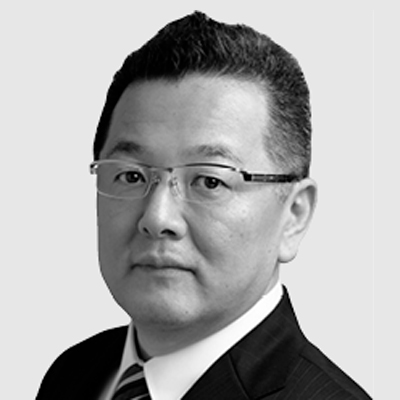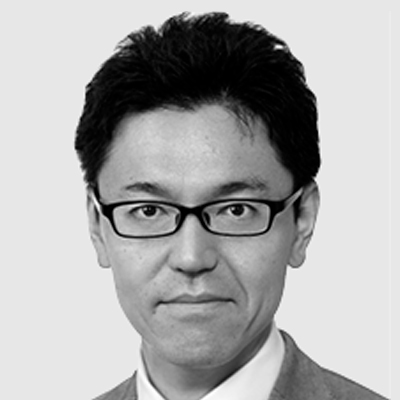Hitachi Solutions for New Work Styles
Interest is growing in strategically implemented staff health management, addressing the subject from a business perspective. This “health management” means health promotion activities targeting staff and initiated by management based on the idea that good health provides the wellspring from which people can be creative and productive.
This article looks at why companies are taking on health management and the social background and benefits of their doing so, and it also uses case studies of leading corporate initiatives to uncover the factors that make for its successful achievement.




Health management has in recent years become one of the essential elements of sustained corporate growth. A major objective is to assess employees’ state of health and help them improve it as a way of improving corporate performance. One of the factors behind this is a shrinking workforce. The working population of Japan is forecast to shrink by about 6% between 2017 and 2030, and by about 12% among young people in the 15-to-29-year age group. In contrast, the number of older workers aged over 60 is expected to grow by about 8%. This is an inescapable reality, with more than 70% of small and medium-sized enterprises already said to be short of staff. Large companies can be sure of facing the same fate in the near future.
Figure 1—Expected Benefits of Health Management The three benefits managers hope to attain from health management are to increase productivity, attract staff, and control healthcare costs.
The three benefits managers hope to attain from health management are to increase productivity, attract staff, and control healthcare costs.
In this time of workforce constraints, managers expect the following three benefits from health management (see Figure 1).
The first is to increase productivity. Specifically, they are seeking to minimize the problems of absenteeism and presenteeism. Absenteeism refers to when staff are unable to go to work and do their job because they are absent, on leave, late to arrive, or early to finish. Whereas most measures in the past were targeted at preventing absenteeism, people have recently come to understand that presenteeism also has a major influence on corporate performance. Presenteeism means that, although the person is present at work, they fail to perform well due to physical or mental health issues. It is anticipated that productivity could be significantly improved if something could be done about this and adequate performance achieved.
The second benefit is to attract staff. Companies that promote themselves publicly as good places to work, with employee health a priority, are viewed favorably by younger workers who value work-life balance, making it easier for such companies to attract staff.
The third benefit is to control healthcare costs. The higher costs that will come with future increases in the number of older workers pose a problem. In the case of preventing diabetes, a condition that causes a sudden increase in medical bills, proactive measures to deal with metabolic syndrome from a young age are important. Health management will help with this.
Japan is currently said to be undergoing a transition to a super smart society amid a fourth industrial revolution that is characterized by major changes in the structure of industry and brought about by advances in technology such as the Internet of Things (IoT), big data, artificial intelligence (AI), and robotics. This is expected, more than ever before, to leave people responsible for work that requires originality, such as devising solutions to problems, offering suggestions to customers, and working creatively, while routine tasks such as data entry on personal computers are all delegated to robotic process automation (RPA). Physical and mental health plays a part in achieving high levels of productivity in such creative work. As a consequence, health management is set to become more important than ever before.
Figure 2—Criteria and Concepts Used to Evaluate Health Management Five different criteria are used to evaluate companies’ health management in the Health & Productivity Stock Selection Program and Certified Health & Productivity Management Outstanding Organizations Recognition Program.
Five different criteria are used to evaluate companies’ health management in the Health & Productivity Stock Selection Program and Certified Health & Productivity Management Outstanding Organizations Recognition Program.
The government of Japan is also pushing health management. This is something that can be seen in the government's choosing to designate the extension of healthy lifespans as the top priority for the concentrated investment of policy resources in its Growth Strategy 2017 for achieving Society 5.0. The Ministry of Economy, Trade and Industry has put together an action plan for encouraging companies and health insurance societies to engage in health management, and is implementing specific measures. For example, the Tokyo Stock Exchange has a Health & Productivity Stock Selection program to recognize stocks (listed companies) with outstanding health management. Targeted at investors committed to a long-term approach to increasing corporate value, the program aims to encourage corporate health management initiatives by identifying companies worth investing in because of their ability to use health management to improve their corporate performance and stock price.
However, because the Health & Productivity Stock Selection program selects only one company from each industry, a separate Certified Health & Productivity Management Outstanding Organizations Recognition Program was launched in FY2017 to expand the spread of health management beyond the top performers recognized by the Health & Productivity Stock Selection program. The new program has two separate categories, one for recognizing small and medium-sized organizations, and one for large organizations (White 500). The number of local government agencies and institutions that are offering incentives (including award programs and financing) to companies chosen by the program is increasing. In other words, it is hoped that this will result in a virtuous circle in which this recognition opens up opportunities for new business development, helping recruit young people looking to be a part of something like this.
The Health & Productivity Stock Selection and Certified Health & Productivity Management Outstanding Organizations Recognition programs use five different criteria to assess an organization (see Figure 2).
Hitachi Consulting Co., Ltd. helps customers who hope to be recognized for their performance in terms of these criteria to define their management philosophy, put the right organizational structure in place, reform systems and implement actions, and establish evaluation practices. The company is also a member of the HR Technology Consortium(1), an organization that promotes the use of technology for human resources (HR) and the use of data analysis results in management, including administering the consortium's health management working group. With a membership that includes universities and companies implementing advanced measures, the working group studies the benefits of different technologies and policies, exchanges information between members, and publishes information.
The following section describes the factors behind successful health management identified from the past activities of Hitachi Consulting and its own interviews, primarily using case studies.
Kao Corporation, Terumo Corporation, TOTO Ltd., Daiwa Securities Group Inc., Tokyu Corporation, and SCSK Corporation were among the 26 companies chosen in the 2018 Health & Productivity Stock Selection program, having been so recognized for four years running. At SCSK, the employment rules note the relationship between staff health and work potential, taking a public stance that staff cannot delight or win over customers if they look tired. As a system integrator, SCSK is in a labor-intensive industry and its practice in the past, like others in its industry, was for system engineers to always stay overnight. On seeing this, a vice president who joined the company from outside the industry took the initiative and introduced a series of health promotion policies, first changing the employment rules, and then going on to set up a dedicated department, as a result of which the company has changed so significantly that it has been recognized in the Health & Productivity Stock Selection program for four years running.
At Kao Corporation, another company that has been recognized by the program for four years running, the Kao Group health declaration states that the company and health insurance society shall provide active support for staff health improvement. Of particular note is an accompanying message from the President urging that these health improvement measures also encompass colleagues and family members. The company has made a success of promoting health by extending consideration even to the health of family members.
In other words, it is vital that managers be fully aware of the significance and importance of health management, and that they express these views clearly and publicly. Of course, the message will not get through if it amounts to no more than words. What is needed is to create opportunities for senior management to convey their thinking directly, by holding town hall meetings, for example, to facilitate greater communication with staff.
Daiwa Securities Group established the group-wide role of Chief Health Officer (CHO) to work with the General Health Development Centers and Health Insurance Association. At Japan Airlines Co., Ltd., in addition to collaborating with health insurance societies, the company also utilizes external specialists to operate a stress check service. While responsibility should remain inside the company, there is nothing wrong with getting outside help. This is because there is no need to do everything in house. Nevertheless, responsibility for undertaking health management at companies recognized for their success in this field should rest with senior management at the C-suite* or executive level. As health management will not be considered in operations if the area is left to HR or administrative departments, participation by senior management is essential. Another determining factor in achieving success is whether or not frontline staff from the workplace are involved.
One thing to watch out for in system reform and policy implementation is to avoid duplicating what other companies do. This is because of the importance of having a clear understanding of what is happening with one's own workforce, remembering that different industries and business models are prone to different health issues. Convenience store supervisors belong to a different industry than IT engineers and consultants, for example, and the illnesses they are most likely to suffer from are also different.
What is important given these different circumstances in different industries is to establish mechanisms by which staff can embark on health improvement activities at their own initiative. One example might be to use bar graphs to show changes in the number of staff suffering from metabolic syndrome or blood pressure issues at each workplace of a healthcare company, using this as a basis for competition between workplaces. This has been seen to prompt staff into voluntarily taking action, such as holding a sports event when they see their office or factory being outperformed by another one. Staff can also refer to predictions of future illness risk and medical costs obtained from the analysis of health check and medical billing data when considering medical interventions.
Itochu Corporation, which has many staff who travel widely, issues all employees with smartphones and wearable wristwatch devices that have a health monitoring function. Staff participate in health programs, keeping track of their progress as they go and setting their own targets, such as getting their weight down below 70kg, based on their health monitoring data (see Figure 3).
One of the challenges with these health programs is a lack of motivation among young people in their 20s and 30s. The way one pharmaceutical company sought to overcome this was to hold workshops where staff could devise their own programs, enabling a bottom-up approach. In response to comments from these workshops about people wanting to choose meals that were both tasty and healthy, the company changed the operator of its staff canteens, putting them in the hands of a well-known restaurant management business. Another company, meanwhile, came up with a program that functions like a game, making it easy for staff to get involved and to enjoy their participation.
Figure 3—Example of Systems and Policy Implementation at Itochu Corporation Itochu Corporation provides ways of raising awareness among staff so that they will be self-motivated to stick with health promotion activities.
Itochu Corporation provides ways of raising awareness among staff so that they will be self-motivated to stick with health promotion activities.
Implementation is not the end of the process. To reflect the evaluation of current measures in the design of future actions, it is essential to make good use of the plan, do, check, act (PDCA) cycle. Along with time off due to ill health, Rinnai Corporation also surveys the level of employee satisfaction with health management initiatives. Kao Corporation is rigorously working through the PDCA cycle, monitoring trends in the medical bills of each employee and high-value medical costs to assess how metabolic syndrome is influencing these costs. While few companies have yet to follow Kao's example of looking at the relationship between changes in body weight and medical bills, the requirement in the future will be to look at the relationship with corporate performance as well.
Just as it has become routine for companies to issue financial reports quarterly, instead of half-yearly, as they did 20 years ago, the PDCA cycle at companies is also becoming shorter. As using annual health check data for decision-making results in PDCA operating on a one-year cycle, measures such as the use of digital devices for continuously recording people's state of health are needed that will enable a more rapid PDCA cycle.
Hitachi Consulting helps establish operational management practices that incorporate the PDCA cycle using a dual approach that combines health data, which can be collected by digital devices, with management data, which is already routinely collected. The company uses this dual approach to elucidate the relationships between health and management. One example of this is the use of optical topography, a human sensing technology, in consulting. Subjects wear a measurement device on their heads to obtain previously unavailable data on employee activity, linking this to business data to analyze the relationship between health and corporate performance. Other technologies that have recently become available include wearable eyeglass devices that can measure people's power of concentration. Given the rapid progress of digital devices, it seems likely that even more advanced forms of health monitoring will become available in the future.
The difference between companies that make a success of health management and those that get stuck is that the former understand the obvious point that a company is nothing without its staff. It is no exaggeration to say that the only companies that can resolve health issues are those who understand that these issues vary from company to company, and who face up to their own staff rather than duplicating what other companies do. It can also be noted that those companies that appreciate the links between health issues and corporate performance take these issues more seriously. In this way, it is the role of the consultant to shed light on what companies are doing about health management and thereby to show the way to success.